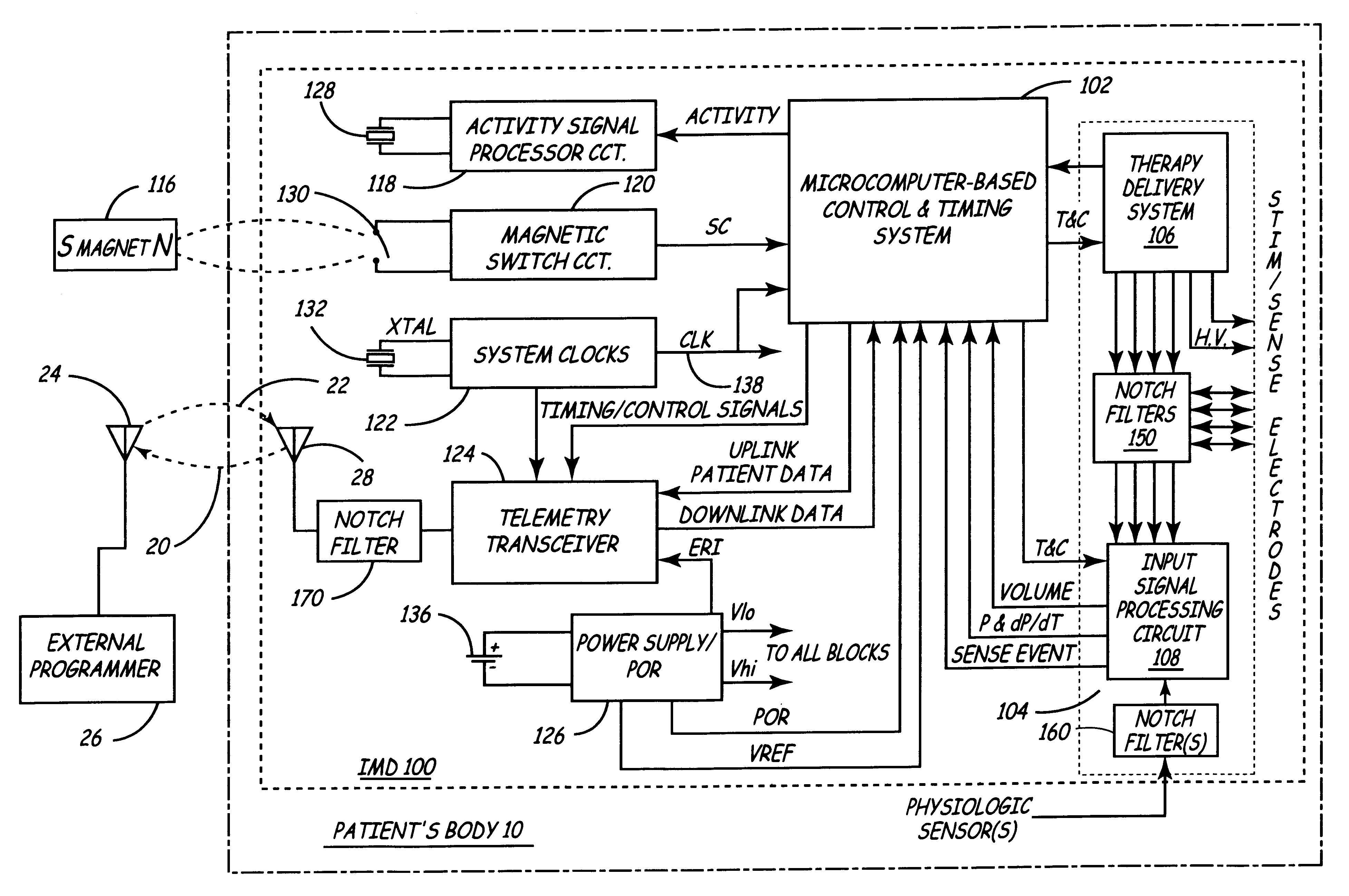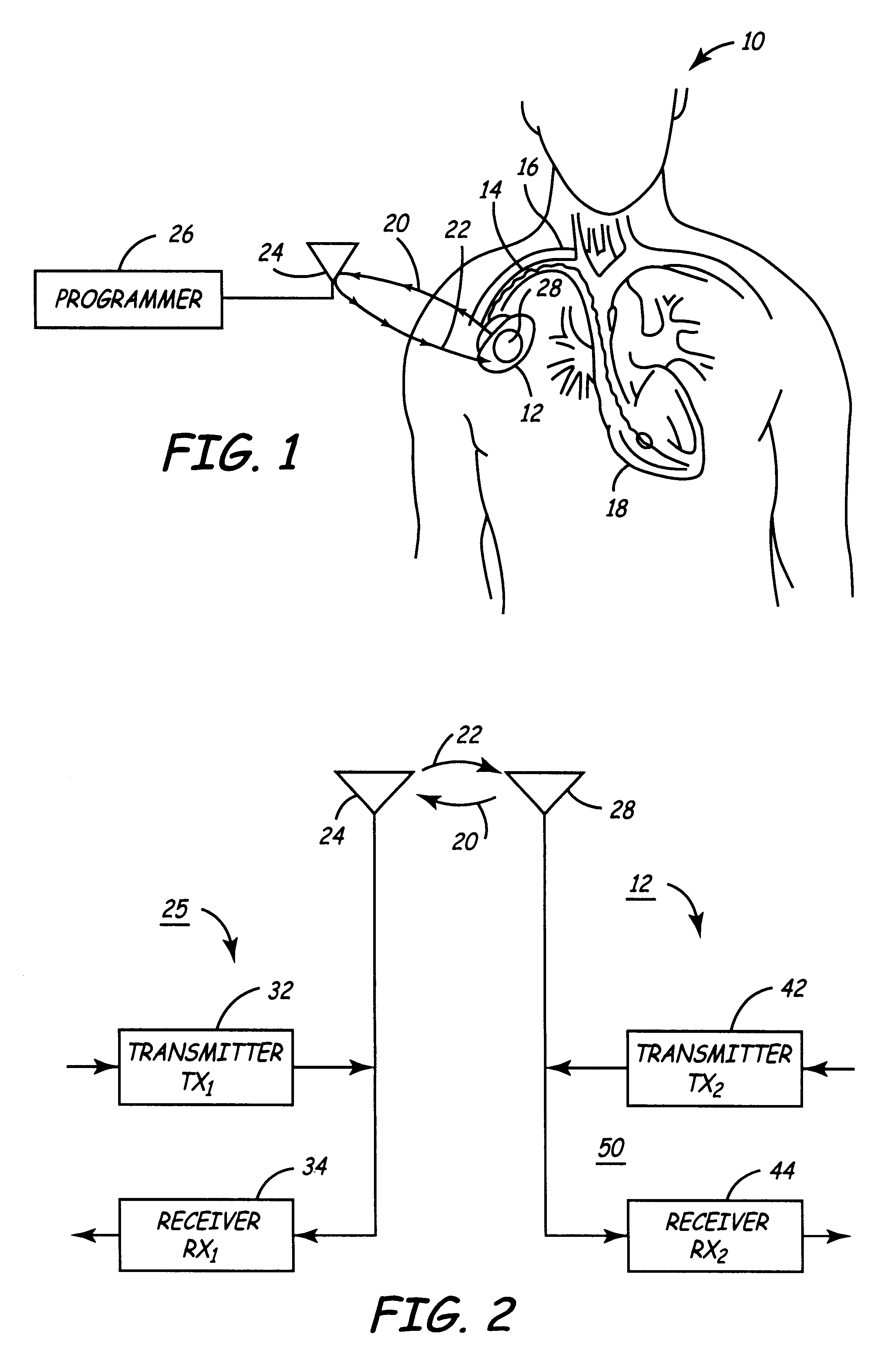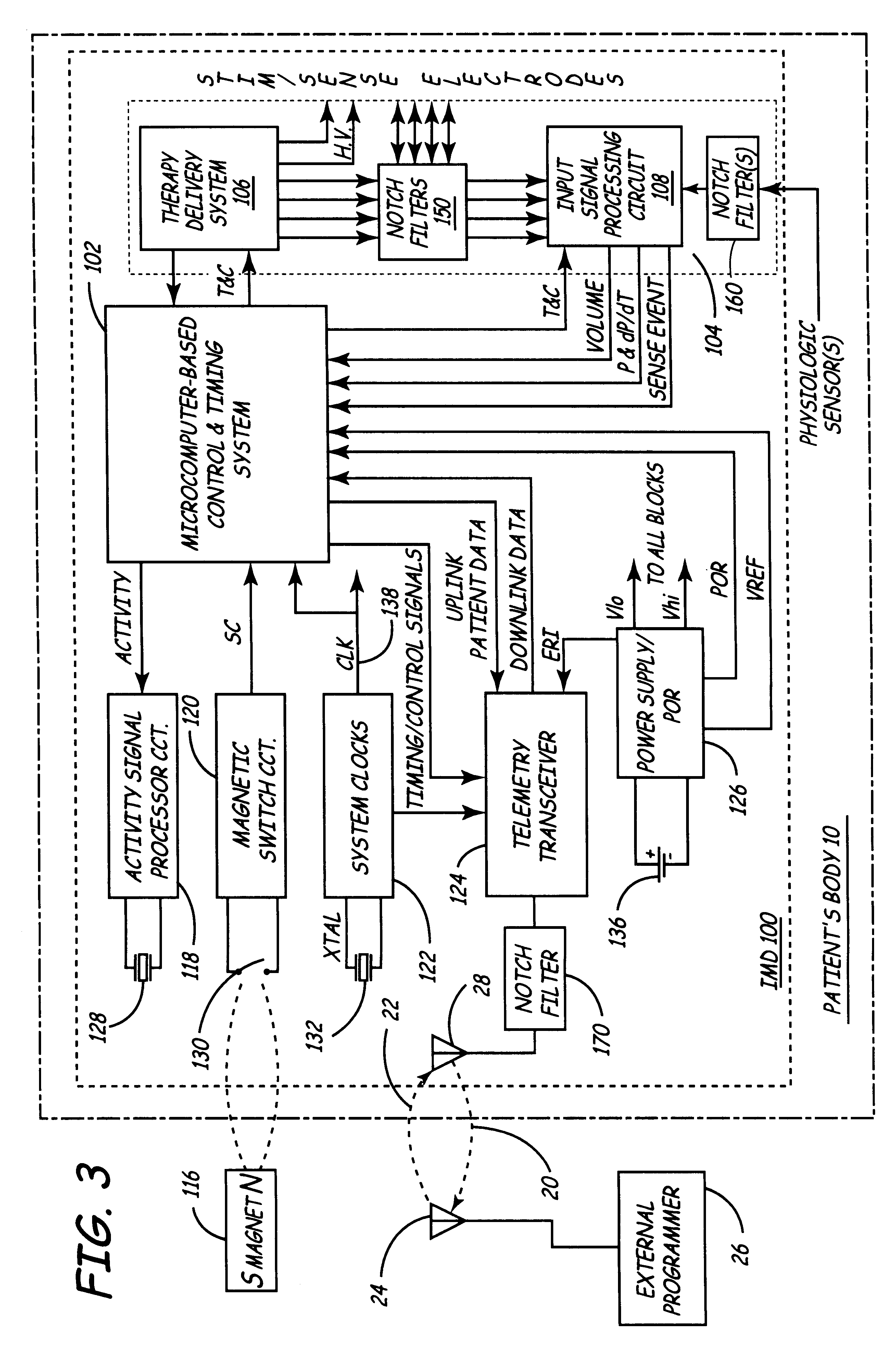Implantable medical device incorporating integrated circuit notch filters
a medical device and integrated circuit technology, applied in electrotherapy, therapy, heart stimulators, etc., can solve the problems of filtering inability to adequately eliminate noise, imd may be unable to extract the true cardiac signal from the noise, and emi signal may overwhelm the cardiac signal picked up by the electrodes
- Summary
- Abstract
- Description
- Claims
- Application Information
AI Technical Summary
Benefits of technology
Problems solved by technology
Method used
Image
Examples
Embodiment Construction
The present invention can be implemented in any IMD having at least one of high frequency RF telemetry capabilities, electrical signal sense capabilities or physiologic sensor signal processing capabilities. The present invention will be described in relation to a particular IMD operating system design incorporating all three capabilities, but it is not intended that the invention be limited to that particular combination when it can be advantageously implemented in various types of IMDs incorporating fewer than all of these capabilities. At present, a wide variety of IMDs are commercially released or proposed for clinical implantation. Such medical devices include implantable cardiac pacemakers as well as ICDs, pacemaker-cardioverter-defibrillators, drug delivery pumps, cardiomyostimulators, cardiac and other physiologic monitors, nerve and muscle stimulators, deep brain stimulators, cochlear implants, artificial hearts, etc. As the technology advances, IMDs become ever more comple...
PUM
 Login to View More
Login to View More Abstract
Description
Claims
Application Information
 Login to View More
Login to View More - R&D
- Intellectual Property
- Life Sciences
- Materials
- Tech Scout
- Unparalleled Data Quality
- Higher Quality Content
- 60% Fewer Hallucinations
Browse by: Latest US Patents, China's latest patents, Technical Efficacy Thesaurus, Application Domain, Technology Topic, Popular Technical Reports.
© 2025 PatSnap. All rights reserved.Legal|Privacy policy|Modern Slavery Act Transparency Statement|Sitemap|About US| Contact US: help@patsnap.com



